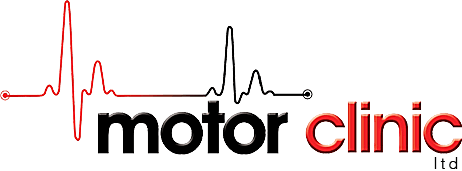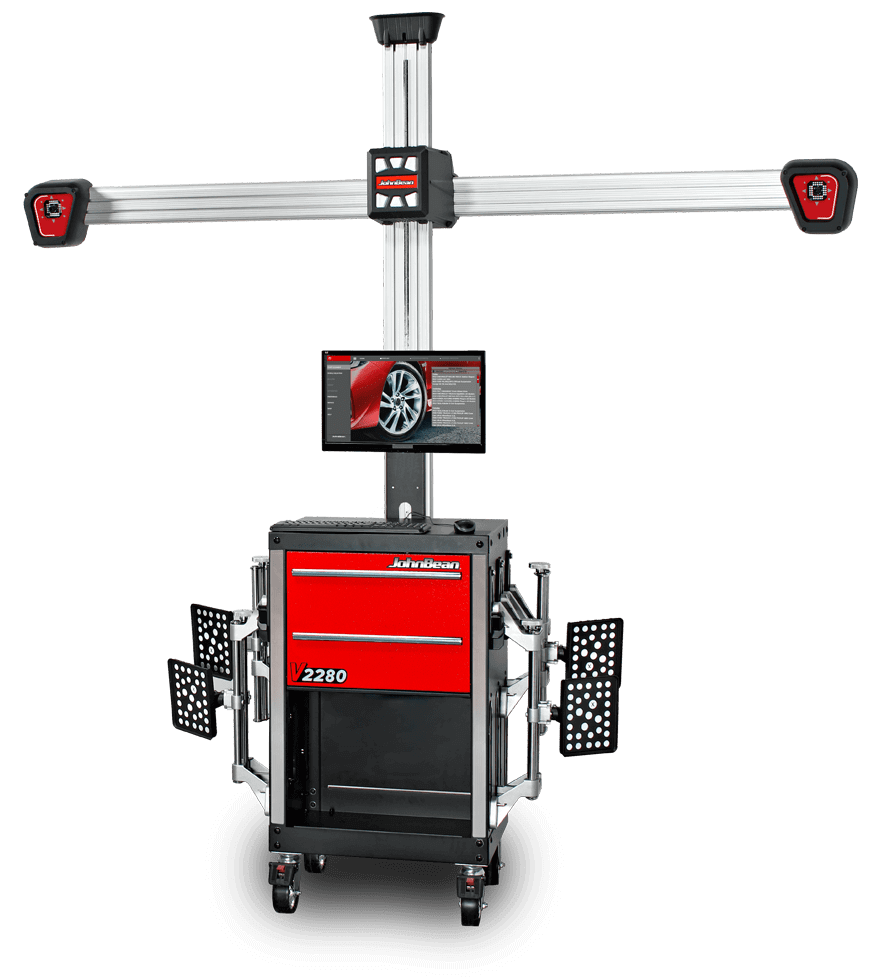
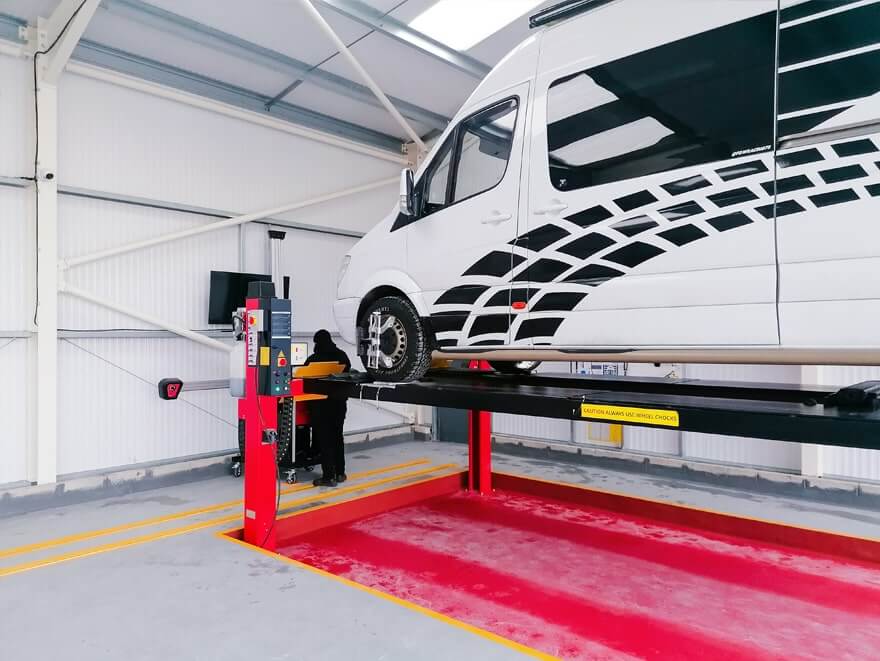
PREVENT TYRES FROM WEARING UNEVENLY WITH
Wheel Alignment
Wheel Alignment
Full, four-wheel alignment
Small vehicle tracking
Large vehicle tracking – we can accommodate vans, campervans and motorhomes
Vehicle geometry check
Camber, caster and toe adjustment
Accident alignment
Bodyshop alignment
What is wheel alignment?
Wheel alignment (often referred to as tracking) is the angle and direction at which your tyres are set.
As each vehicle is different, your wheels will need to be aligned according to your manufacturer’s specification.
Do you need wheel alignment?
Tyres wearing unevenly
Vehicle pulling to one side
Steering wheel off centre when driving straight
Noise at low speeds
Does your vehicle feel like its pulling to one side? Is it difficult to steer? Are you tyres wearing on one side more than the other?
These are the tell-tale signs that your wheels may need to be realigned.
If you’ve been in an accident, driven over a pothole or ‘kerbed’ your vehicle, this can also affect wheel alignment.
Large vehicle tracking – vans, campers and motorhomes
Did you know that Motor Clinic is one of the few garages in Stoke-on-Trent that can accommodate larger vehicle tracking?
We can carry out precision wheel alignment on vans, campervans and motorhomes in our new custom-built facility.
Want to see if the wheels on your transit van are correctly aligned and not costing you more in fuel?
Need to check the tracking on your motorhome before that next family holiday?
No problem.
Head to Motor Clinic – we’re experts in large vehicle tracking and wheel alignment.
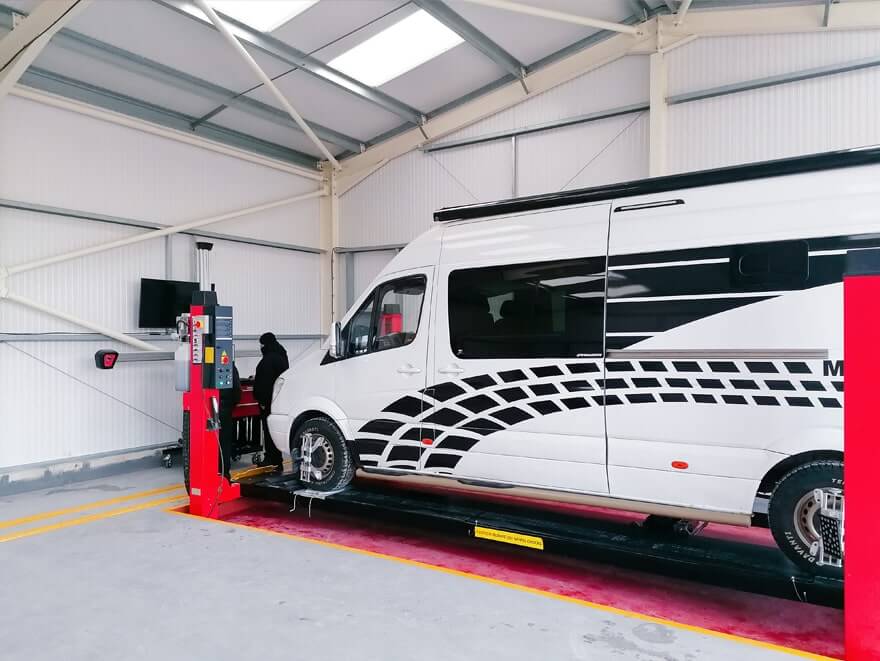
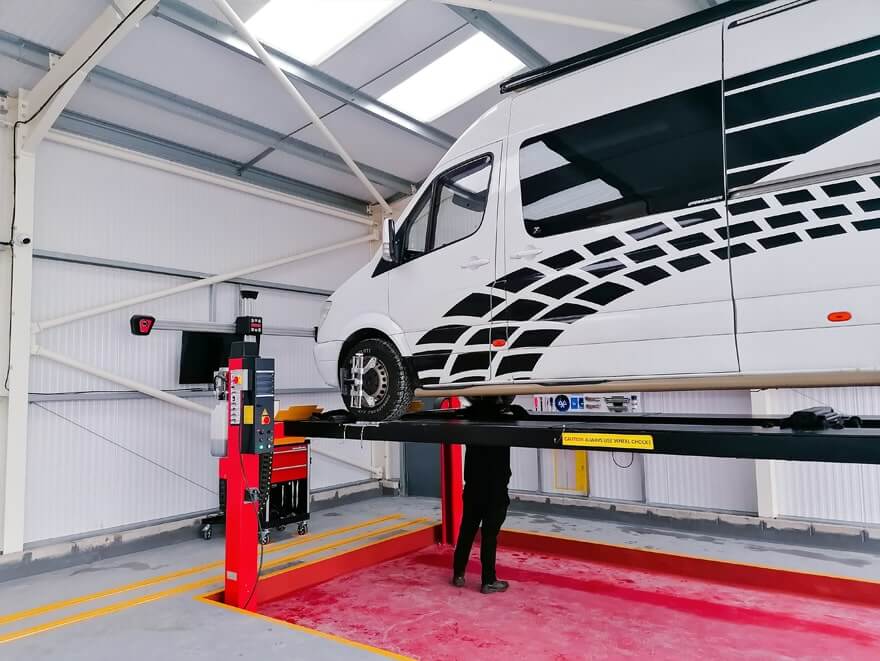
What does a Wheel Alignment Report look like?
When you have your wheels aligned at Motor Clinic, we will provide you with a report. It details the before and after positions of your wheels in relation to toe, camber and caster.
Click the button below to see an example report.
What is camber and caster?
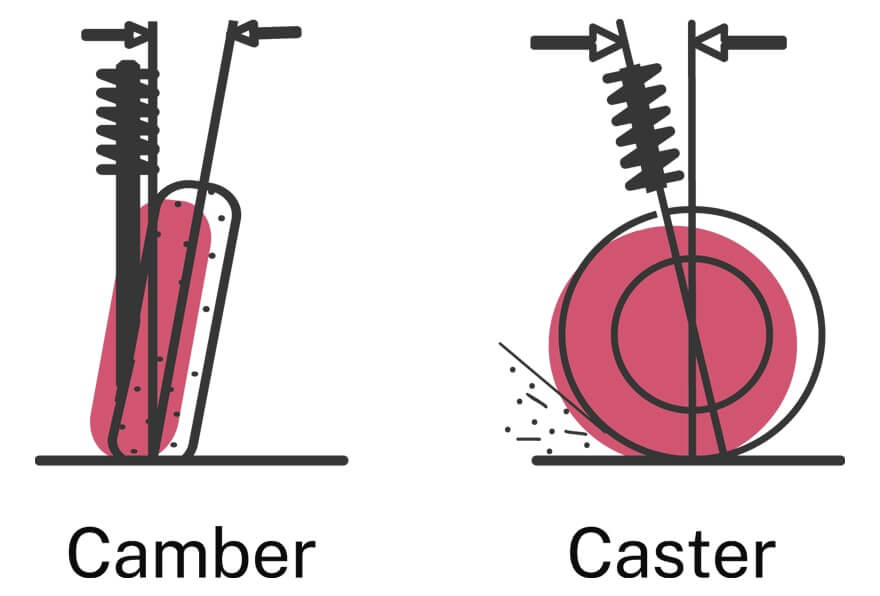
Camber is a measurement in degrees of the tyres centre line relative to the road surface.
Positive camber is when the base of the tyre tucks inwards. Negative camber is when the top of the tyre tucks inwards.
Caster is the angular displacement of the steering axis from the vertical axis of the wheel viewed from the side.
Positive caster is when the wheel is in front of the upper pivot point. Negative caster is the opposite.
Modern vehicles use positive caster. This helps to straighten the steering wheel when the car goes forward.
What is toe?
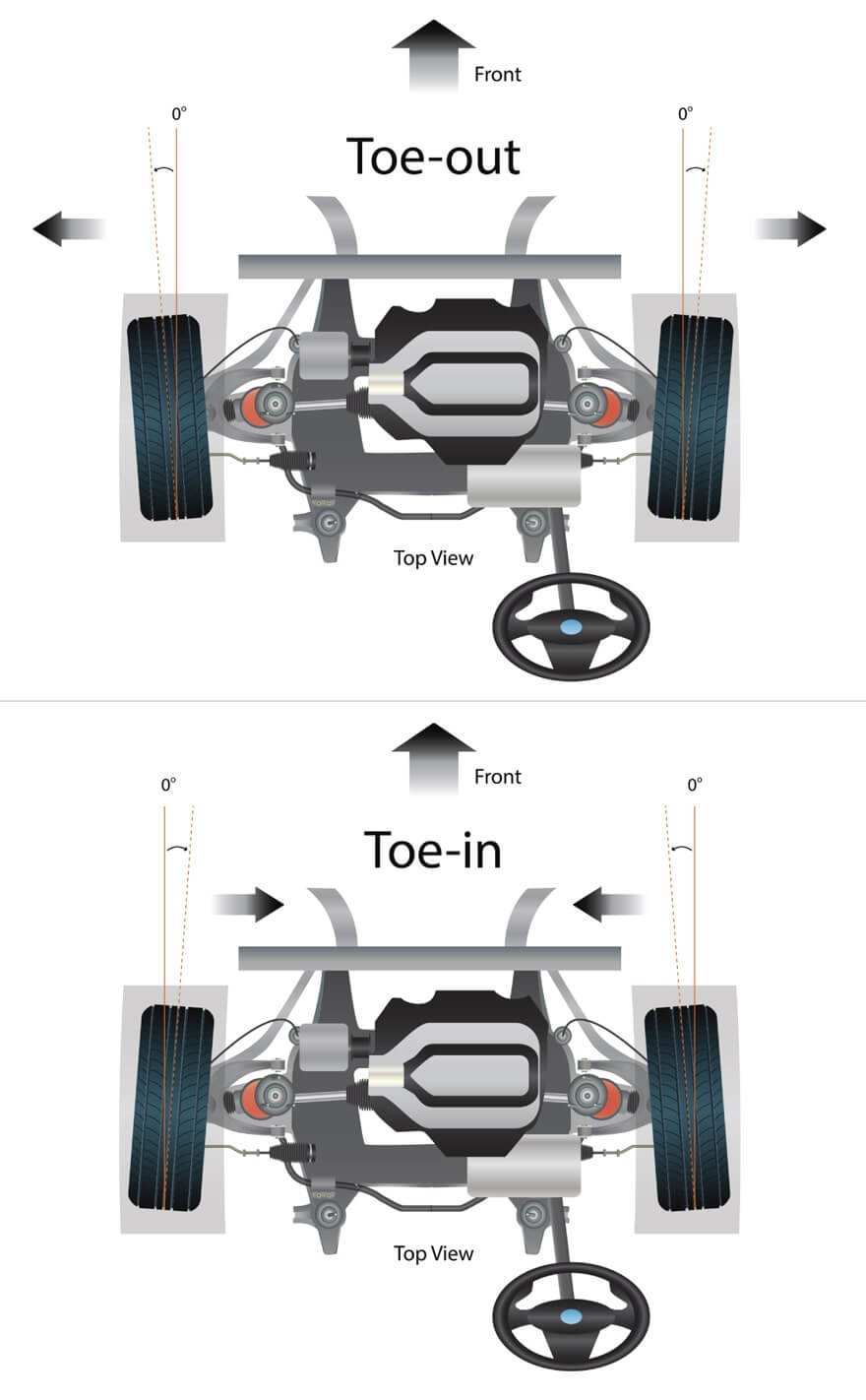
Toe is essentially the extent to which your tyres turn inward or outward.
Take a look at the diagram above.
The top illustration shows tyres that are ‘toed out.’ This means they will show wear on the inner shoulder.
The bottom illustration shows tyres that are ‘toed in.’ This means they will show wear on the outer shoulder.
Wheels can either either pull towards each other or pull apart. Therefore, different vehicles require different toe settings.
If your wheels are poorly aligned, your tyres are not the only things that can be affected. Your vehicle may also use more fuel and/or not come to a stop as quickly as it should when you brake.
What are the advantages of correctly aligned wheels?
Drive more safely – Misaligned wheels are less reliable in the event of an emergency. Proper alignment mens that your vehicle will handle better.
Save on fuel, help save the environment – Less drag on your tyres means fuel consumption will decrease. This, in turn, reduces CO2 emissions and helps protect our environment.
Get more from your tyres – No more uneven tyre wear means you can prolong the life of your tyres.
Save on other parts – Misaligned wheels can put other parts of your vehicle under increased strain – particularly the suspension. You can prevent this kind of damage with accurate wheel alignment.
